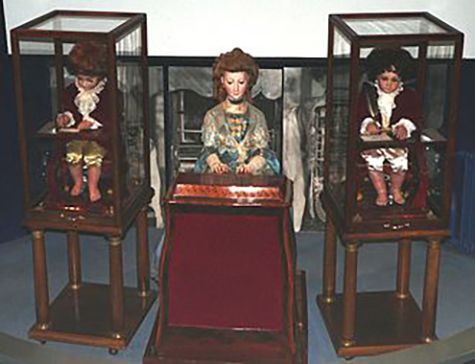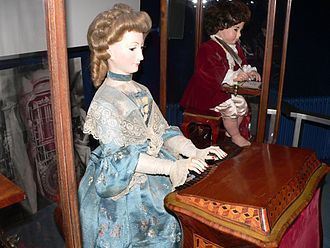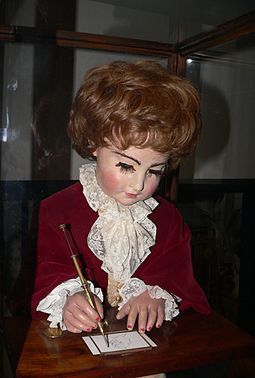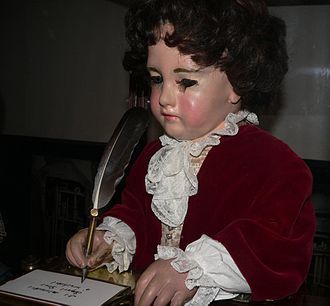Amazing Humanoid Automata
A few weeks ago M in Wheelers Hill sent to me a video showcasing an amazing 240 year old doll that can write.
Come with me in my Time Machine back to 1774 where I have learnt about, not one very smart automaton, but three!

In 1774, Pierre Jaquet-Droz (1721-1790), his son Henri-Louis Jaquet-Droz (1752-1791) and their fellow clockmaker Jean-Frédéric Leschot (1746-1824) presented three humanoid automata known as The Musician, The Draughtsman and The Writer for the first time at their workshop in La Chaux-de-Fonds.(en.wikipedia.org)
The Musician is modelled as a female organ player. The music is not recorded or played by a musical box: the doll plays a genuine, custom-built instrument by pressing the keys with her fingers. Movements of her chest show her "breathing", and she follows her fingers with her head and eyes. The automaton also makes some of the movements that a real player would do, such as balancing the torso.(en.wikipedia.org)

The Draughtsman is modelled as a young child, and is capable of drawing four different images: a portrait of Louis XV, a royal couple (believed to be Marie Antoinette and Louis XVI), a dog with "Mon toutou" ("my doggy") written beside it, and a scene of Cupid driving a chariot pulled by a butterfly.
The Draughtsman works by using a system of cams that code the movements of the hand in two dimensions, plus one to lift the pencil. The automaton also moves on his chair, and he periodically blows on the pencil to remove dust. (en.wikipedia.org)

The Writer is the most complex of the three automata. Using a system similar to the one used for the draughtsman for each letter, he is able to write any custom text up to 40 letters long (the text is rarely changed; one of the latest instances was in honour of president François Mitterrand when he toured the city). The text is coded on a wheel where characters are selected one by one. He uses a goose feather to write, which he inks from time to time, including a shake of the wrist to prevent ink from spilling. His eyes follow the text being written, and his head moves when he takes some ink. The writer is 70 cm (2 ft 4 in) tall.(en.wikipedia.org)

The automata were produced as advertisement and entertainment toys designed to improve the sales of watches among the nobility of Europe in the 18th century. They were carried around, and lost at several points. The History and Archeology society of Neuchâtel eventually bought them in 1906, for 75,000 gold francs, and gave them to the Musée d'Art et d'Histoire of Neuchâtel, in Switzerland. They are considered to be among the remote ancestors of modern computers. (en.wikipedia.org)
And now thanks to the BBC you can watch The Writer in action.
More about the story of these three amazing automata can be read by following the bookmark link below to The Jaquet Droz website. You will also be rewarded by seeing some very nice watches.


